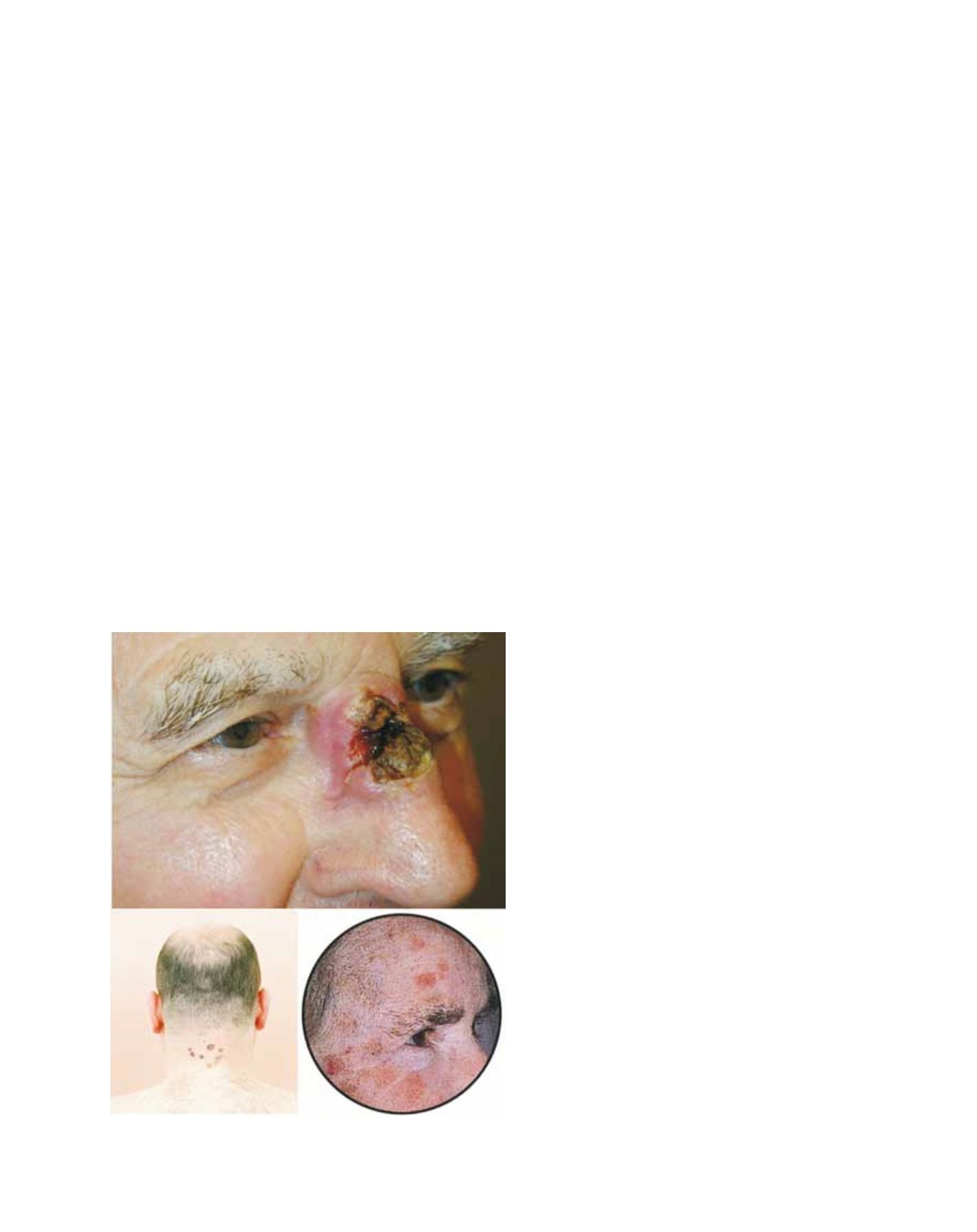

[
] 115
H
ealth
is recorded around 13:00 local time (LT) year-round in the whole
country. In northern and central Chile, the period of high-risk expo-
sure (levels above 6) goes from 10:00 to 17:00 LT in summer, while
in the most southern city (Punta Arenas, ~ 53°, 70°W, 39 masl), on
average, the UVI is under level 6 risk year-round; that is, the index
only reaches moderate values which are equivalent to small risk of
damage from unprotected sun exposure. However, during spring,
Punta Arenas and the surrounding areas can experience episodes of
significant UVI increase.
Analysis of the data recorded by stations deployed at different
elevations indicates an increment of UV – and therefore of the UVI
– with altitude. This is due to two factors: first, at higher altitudes
more UV can get to the surface because the atmosphere is thinner.
And second, due to a clearer atmosphere, lower values of aerosol
optical depth are found near the surface atmosphere as compared
with values at lower altitudes.
1
In northern Chile, comparison
between data recorded by the stations located at Antofagasta (~
23°S, 70°W, 115 masl) and San Pedro de Atacama during cloudless
days in summer reveals differences in UVI of five to seven levels,
which correspond to an altitudinal increase of two to three units per
kilometre. However, on average, results from the Chilean stations
concur with the overall altitudinal increment of 10-12 per cent of
the UV levels per kilometre. This altitudinal factor on UV radiation
is not constant throughout the year; significant seasonal variation
is mainly found in winter when the vertical differences at midday
hours are higher due to a greater solar zenith angle.
The incoming UV irradiance is attenuated by clouds, which
depend on both thickness and cloudiness (type and amount). Thin
or scattered cloud can have little effect or even enhance
the UV compared with cloudless skies. On the other
hand, cloudy days can decrease UV irradiance reach-
ing the ground by absorption and scattering through
the water vapour and the aerosols. A good correla-
tion between UV and cloudiness was found at stations
located in northern and central Chile (r = 0.88 for
Santiago), but the correlation is poor in the southern
regions, most probably due to the presence of cumu-
liform clouds as revealed the study done at Valdivia.
2
However, days with a concentration below 250 DU can
correlate with episodes of increased UVI under cloud-
less sky conditions in summer. The impact of this on
human health is documented by a medical study
3
that
found a relation between stratospheric ozone concen-
tration below 260 DU and cases of sunburn in children
due to exposure during January. With regard to the
ozone hole that develops in the southern Polar regions
during the spring season, regions with minimum
concentration eventually reach the Antarctic Peninsula
and the southern tip of South America. Large increases
in UV-B associated with the Antarctic ozone hole have
been measured, with increases up to 38 times those of
similar days with normal ozone.
4
Significant decreases
of stratospheric ozone along with increments of UV-B
occurred during the mid and late austral spring of 1999.
These events caused a significant increase of patients
with sunburn in Punta Arenas.
5
The stratospheric ozone layer is a natural protec-
tive filter for the harmful UV radiation provided by the
atmosphere. Depletion of this layer has negative effects
on flora and fauna, including human health, due to
exposure to higher UV levels. This fact motivated some
senators and the Chilean Government to produce a
law regarding the protection of the stratospheric ozone
layer. The Ozone Law, as it is called, was published in
2006. Its main objectives are to establish control mech-
anisms for substances that deplete the stratospheric
ozone, and to ensure the appropriate implementation
of the Montreal Protocol and the protection of human
health and ecosystems affected by UV. The law gives
responsibility to the DMC as the official source of infor-
mation and public dissemination of the UVI and risk
for human beings. Today, the daily maximum UVI and
the prediction for the next day can be found on the
institutional webpage
www.meteochile.gob.cl. The law
was later complemented by a Supreme Decree that was
published in 2011, with the purpose of establishing
regulations for health protection and preventions to
be applied at workplaces. This is a pioneer legislation
in Latin America which establishes a precedent in the
prevention of occupational health risk in the country.
In this context permanent monitoring, the addition
of new stations to the URN, climate UV studies and the
daily forecast have become essential information not
only with regard to physical and biological effects over
the territory, but also with regard to supporting deci-
sion-makers within the framework of protecting public
and occupational health.
Skin cancer caused by excessive exposure to UV radiaton
Image: Sociedad Dermatológica de Chile
















